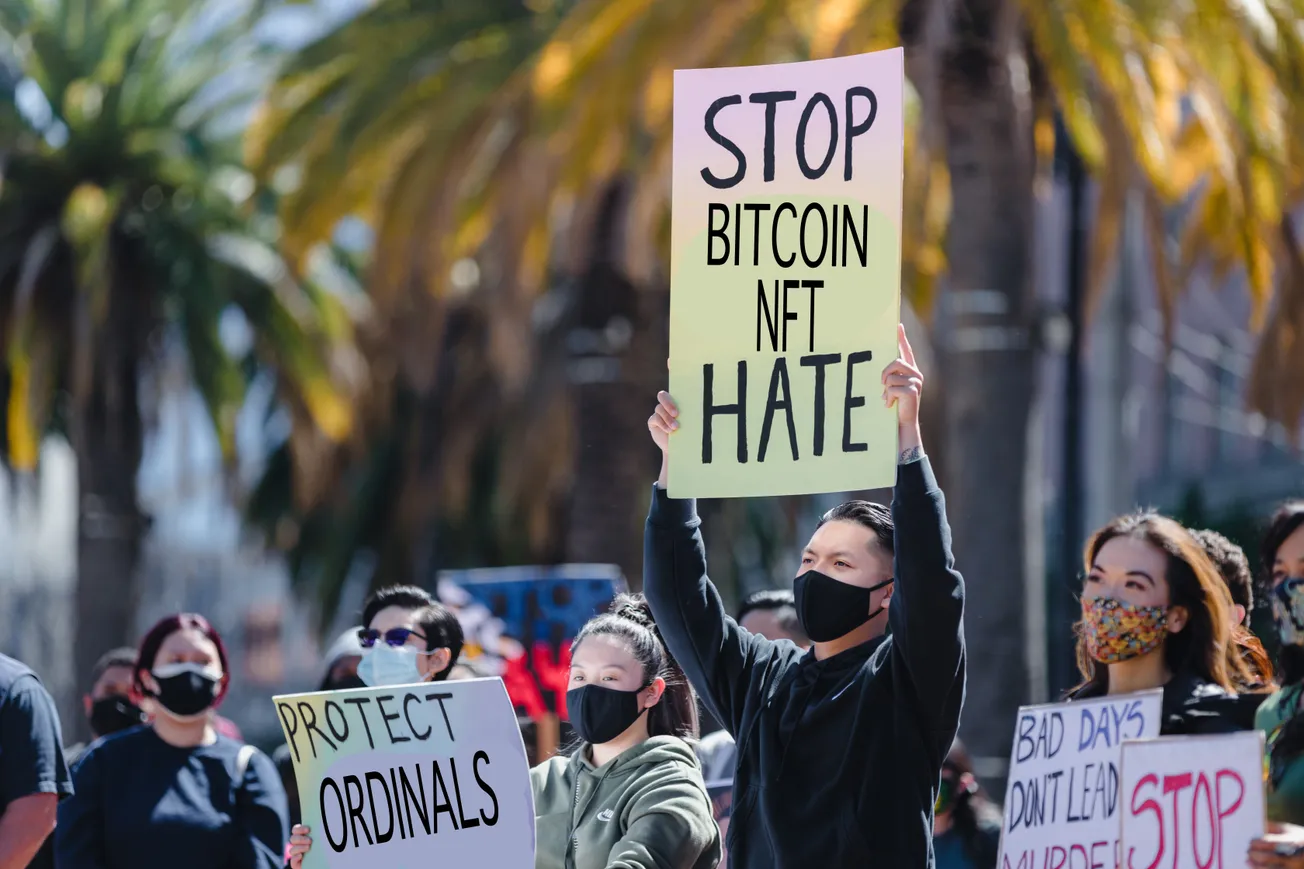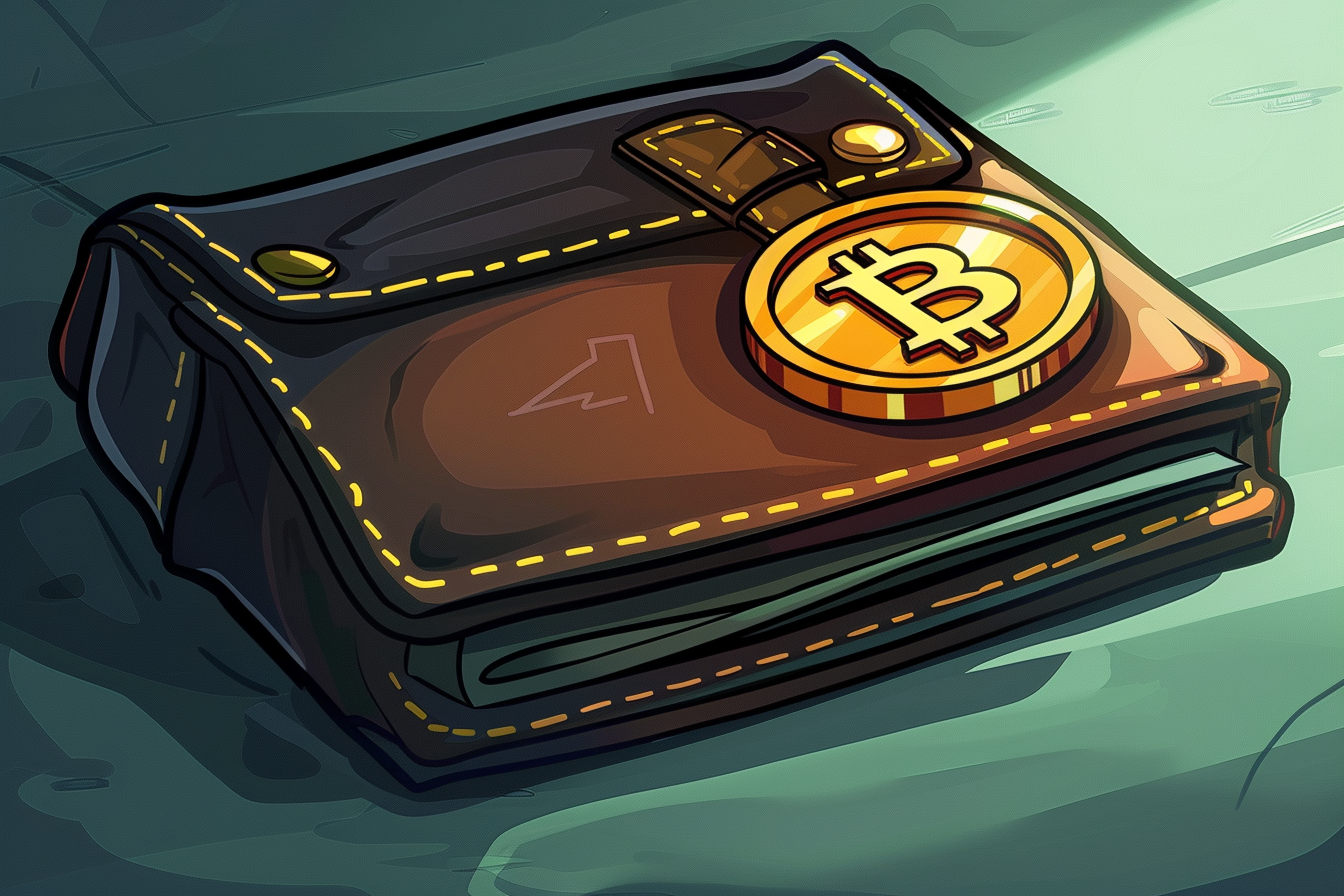Table of Contents
Bitcoin non-fungible tokens (NFTs) have called quite the stir in the crypto community, but even more so among the Bitcoin community itself.
Launched on 21 January 2023 by Bitcoin Core contributor and software engineer Casey Rodarmor, the new Ordinals protocol built on the Bitcoin mainnet allows digital media to be inscribed on the Bitcoin blockchain, effectively allowing for NFTs on Bitcoin.
Inscriptions are finally ready for Bitcoin mainnet.
— Casey Rodarmor (@rodarmor) January 20, 2023
Inscriptions are like NFTs, but are true digital artifacts: decentralized, immutable, always on-chain, and native to Bitcoin. 🧵https://t.co/a4dK7zdITS
100 million satoshis (sats) make up 1 bitcoin. Ordinals allow the user to order and label each individual sat. Inscriptions allow for attaching digital assets such as JPEGs, texts and even video games to each sat.
Unlike Ethereum based NFTs, Ordinals allows users to store all the data to a Bitcoin NFT such as full songs, videos and apps up to the full size of a Bitcoin block.
Read more: Blocksmith Says: Bitcoin Headed Down
Regular NFTs as we know them can only store a link that then points to a webpage where the image or other digital media is hosted. If this site is pulled down, the asset is gone. By storing the asset directly on the Bitcoin blockchain, Ordinals offers a far superior and more decentralised form of NFTs.
Pro Bitcoin NFT
With more than 11,000 NFTs being minted via Ordinals, with a daily mint of over 3,300 NFTs, the new protocol is rapidly gaining traction.
Bitcoin bull Dan Held highlights how Ordinals can "bring more financial use cases to Bitcoin" whilst driving "more demand for block space (aka fees)".
Ordinals = NFTs on Bitcoin.
— Dan Held (@danheld) January 29, 2023
This is good for Bitcoin.
The O Show host Wendy O says that one of the greatest things about Bitcoin is "giving power back to the people" and that "there are Bitcoiners that do art, so why shouldn't they be able to reap the same benefits [of Ethereum artists]?"
"Any type of creative industry it is overrun by record labels and art galleries and these predatory third parties," she continues. "So if Bitcoin can help fix that, why wouldn't we want this to thrive?"
This is so interesting!
— dennis (@pourteaux) January 29, 2023
Someone is paying about $2 each for minting the old Ether Rocks on bitcoin.
You can literally see these larger inscription transactions filling up the block. pic.twitter.com/0zKl0INXrg
CoinDesk's contributing editor-at-large Zach Seward added that Ordinals as a "win for Bitcoin" as it could "bring more functionality to the Bitcoin blockchain" and more interest through "all sorts of new activity that otherwise would be migrated to Ethereum."
Not so NFT friendly
Not all Bitcoin bulls are in favour of the blockchain's latest development.
"The Ordinals block explorer should be browsed with caution, IMO," tweets Pledditor. "It has auto executing, unvetted pieces of JS code executing in your browser that possibly could be malware. Seems like a minefield you should probably avoid."
The Ordinals block explorer should be browsed with caution, IMO.
— Pledditor (@Pledditor) February 7, 2023
It has auto executing, unvetted pieces of JS code executing in your browser that possibly could be malware. Seems like a minefield you should probably avoid.
Are inscriptions (ordinals, NFT’s, etc.) good or bad for #Bitcoin?
— ₿ Isaiah⚡️ (@BitcoinIsaiah) February 3, 2023
The Hash co-host Jennifer Sanasie explains that the anti-Ordinals believe that the development is "not part of Satoshi's vision."
"It's not a peer to peer transaction, it's a silly NFT," she says, presenting the Bitcoin maxi view. However, Sanasie does concede that when going through the arguments against Ordinals, she thought "isn't that the beauty of decentralization, that one person Satoshi or one group of people can actually make this decision and if people want to use this and and want to have it they can?"
Another area of contention is Bitcoin's transaction fees, which have been rising along with Bitcoin NFT mints.
As of 3 February, the average Bitcoin transaction fee was $1.84, the highest since November 2022.
Read more: More Crypto Regulation on the Cards in South Korea
“Ordinal NFTs are contributing to the rise in transaction fees we’ve seen this week.” said Colin Harper, head of content and research at crypto-mining services firm Luxor Technologies. “Transaction fees wouldn’t be as high as they are currently if it weren’t for the sudden influx of Ordinal NFT transactions”.
Maxis argue that the rise in fees could be detrimental to Bitcoin's ethos. "Marginalized peoples in developing countries will have to pay more to run their Bitcoin nodes and send transactions because privileged wealthy whites want to put JPEG drawings on the blockchain as status symbols. Just because you can doesn’t mean you should," writes one pro-Bitcoin tweeter.
Marginalized peoples in developing countries will have to pay more to run their Bitcoin nodes and send transactions because privileged wealthy whites want to put JPEG drawings on the blockchain as status symbols. Just because you can doesn’t mean you should.
— Bitcoin is Saving (@BitcoinIsSaving) January 29, 2023
Others regard Ordinals a "spam attack" that needs to be patched. "Bitcoin is experiencing a spam attack, blocks are filling up fast with internet goods including jpegs. This development has been enabled by segwit, a soft fork that inflates the maximum block size of 1mb to 4mb. What is the path forward? Ban or Approve?" Said one angry tweeter.
Bitcoin hodler, miner and node runner Derek Ross simply tweeted, "Ordinals are an attack on #Bitcoin. It's being orchestrated by known bad actors."
Bitcoin is experiencing a spam attack, blocks are filling up fast with internet goods including jpegs.
— Decred Society (@DecredSociety) February 2, 2023
This development has been enabled by segwit, a soft fork that inflates the maximum block size of 1mb to 4mb.
What is the path forward? Ban or Approve? https://t.co/WJSsAZx6lb
Ordinals are an attack on #Bitcoin.
— Derek Ross ⚡⛓️ (@derekmross) February 2, 2023
It's being orchestrated by known bad actors.
Alex de Vries, a long-time Bitcoin cynic and purported environmentalist, further argues that Ordinals have a drastic environmental impact.
"The carbon footprint of NFTs on Ethereum wasn’t looking great before The Merge, but it was nothing compared to the latest hype: on-chain Bitcoin NFTs," he writes on LinkedIn, adding that Bitcoin mining company Luxor mined the largest block ever, which had a carbon footprint equivalent to "the per passenger carbon footprint of taking a flight from New York to Tokyo and back - 466 times."
Maxi backlash
Bitcoin maxis appear to be losing the debate. Crypto advocate Udi Wertheimer tweeted, “Bitcoin maximalists aren’t real bitcoiners. Real bitcoiners are a happy bunch that likes to have fun. Hal Finney, for example, would have loved the [Taproot Wizards] Bitcoin NFTs. Let’s make bitcoin fun again.”
Bitcoin maximalists aren’t real bitcoiners
— Udi Wertheimer (@udiWertheimer) February 3, 2023
Real bitcoiners are a happy bunch that like to have fun
Hal Finney for example would have loved the @TaprootWizards Bitcoin NFTs
Let’s make bitcoin fun again 🧙♂️ pic.twitter.com/syKGv4S2B9
Wendy O pointed out that "Bitcoin maximalists always say that anything other than Bitcoin is an S coin? It's not good, it's scams, etc. So the fact that people are actually able to utilize NFTs which provide a real use case, on Bitcoin, wouldn't this be a good thing for Bitcoin?"
Seward also slammed anti-Ordinal Bitcoin maxis as being like an "old man who shouts at the cloud" and that "NFTs being fun is a good argument."
Rodarmor also told Decrypt that Bitcoin blocks need to be full to give users a reason to pay more than the minimum fee.
“If blocks are not full, then nobody has any reason to pay more than the minimum fee rate to have their transactions included in a block,” he said. “So as a result, blocks must be full."
bitcoin maximalism vs @TaprootWizards NFTs
— Udi Wertheimer (@udiWertheimer) February 2, 2023
very interesting discussion on @CoinDesk pic.twitter.com/LEja5ntrPo






